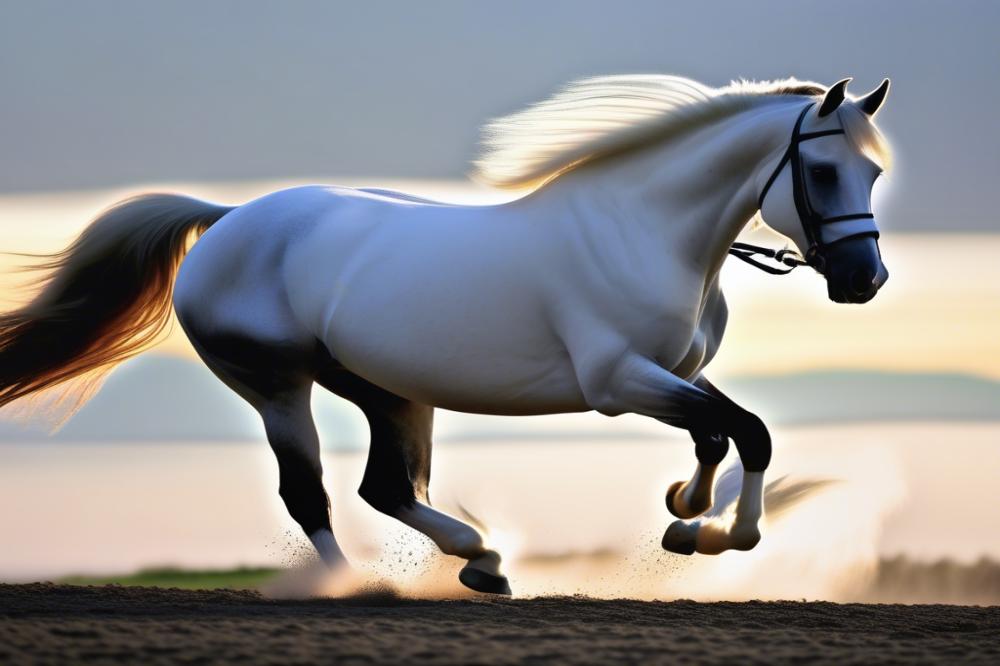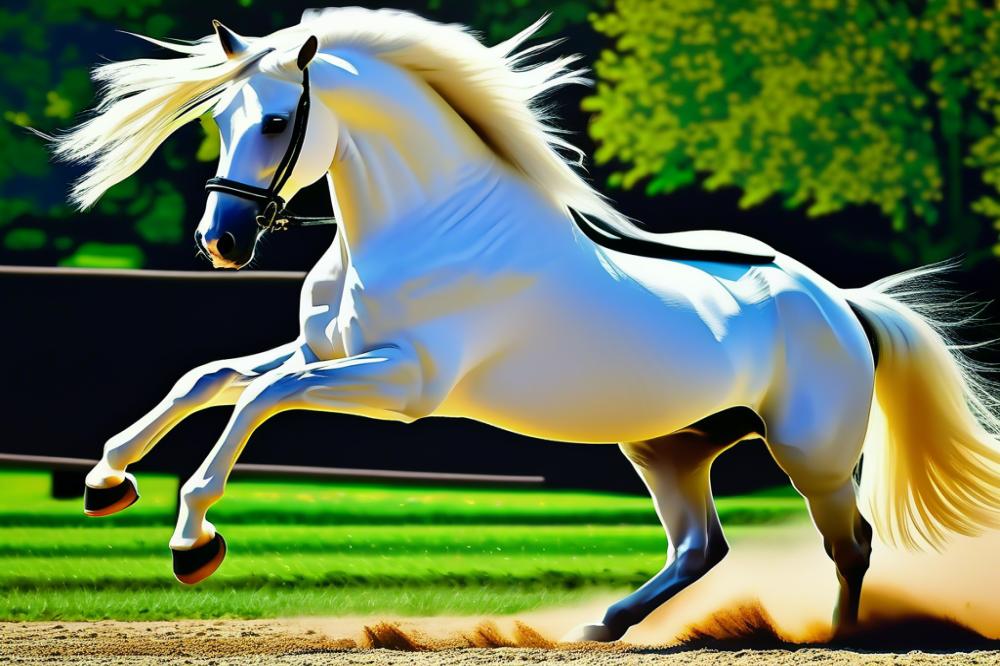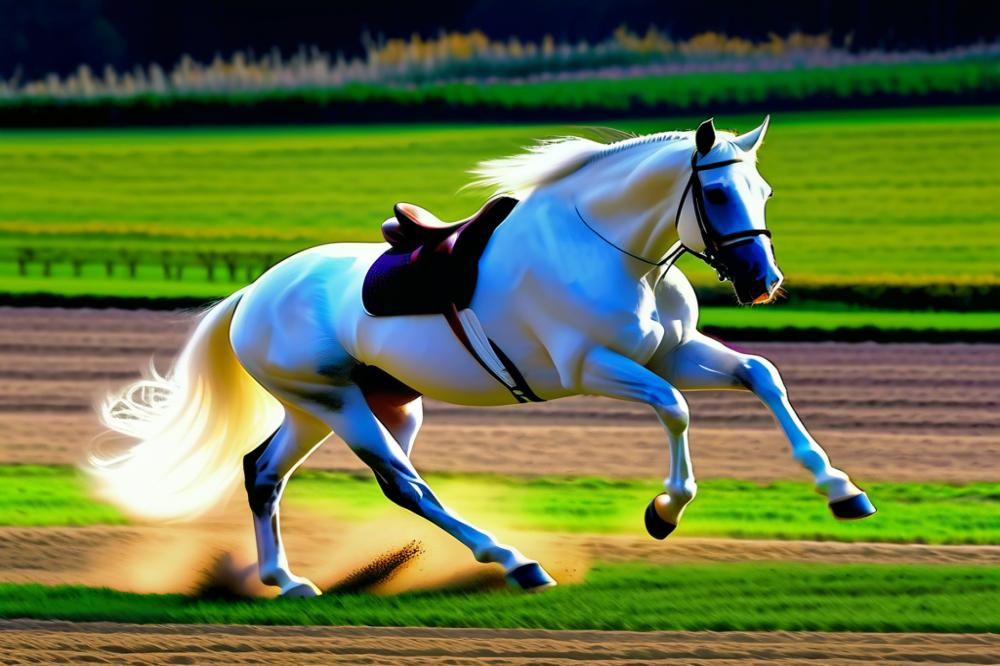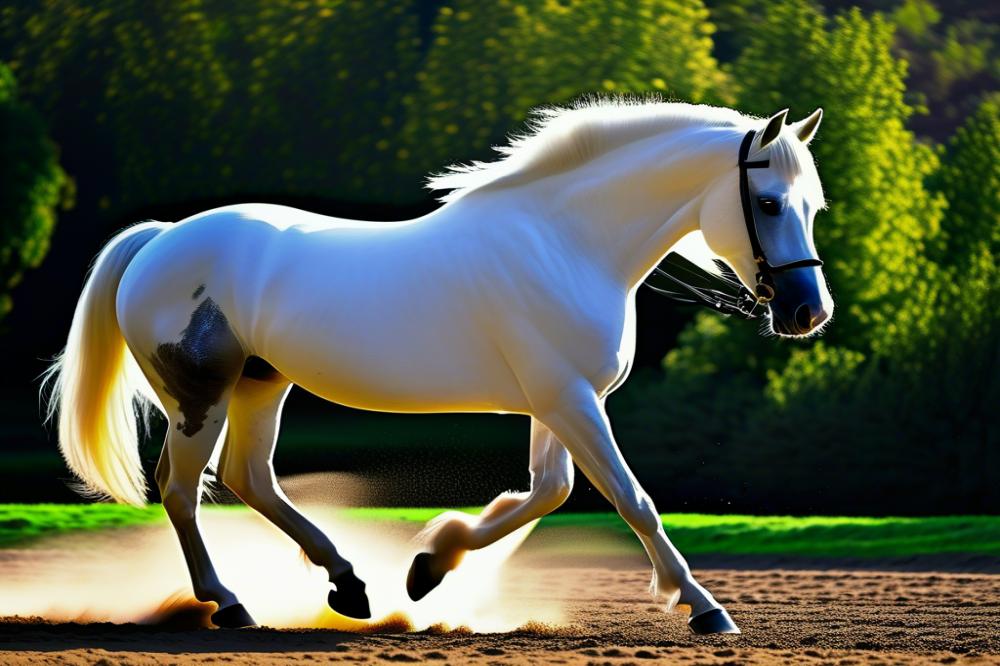Overview of Lipizzan Horses
When you think of majestic horses that have danced through the pages of history, the Lipizzan comes to mind. These elegant equines are famous for their stunning movements and distinctive traits. Originating from the beautiful region of Lipica in Slovenia, this breed captures our hearts with not just their appearance, but also their spirited personalities.
Significance in Equestrian Culture
Throughout the centuries, Lipizzans have played an important role in equestrian culture. Known for their impressive performances, they often grace the ring with displays of classical dressage. Many horse lovers are enchanted by the grace and elegance of these animals as they perform movements that seem almost magical. Every leap and pirouette tells a story, reminiscent of the grand history that surrounds them.
Horse Breed Information

What makes Lipizzans stand out? Well, it’s all in their equine characteristics. They possess a unique combination of strength and grace, which allows for their impressive skills. Additionally, Lipizzans are known for their distinctive white coats that develop as they mature. Interestingly, they are born dark and gradually transition to white, which adds a layer of curiosity about their life cycle. It’s a bit like waiting for a caterpillar to transform into a butterfly – exhilarating!
Horse Care and Lipizzan Traits
Are you ready to learn some horse facts? Caring for a Lipizzan requires understanding their specific needs and unique traits. They thrive with proper nutrition and regular exercise. Training can be an adventure, and understanding their temperament is key. It’s essential to maintain a bond of trust and respect. Think of it as building a friendship that will flourish over time.
The Purpose of the Article

This article aims to provide you with a delightful exploration of Lipizzan horse facts. From their fascinating history to their captivating performances, there’s much to uncover! If you’ve ever pondered the question, “Can a horse be a pet?” you’re certainly not alone. Although Lipizzans are more often seen as show horses, their personalities could win over even the most discerning horse lovers.
As we dive deeper into the world of these remarkable horses, we’ll touch on their training, personality quirks, and even compare them with other breeds, like the akhal-teke temperament. So, saddle up and get ready for a journey through the enchanting universe of Lipizzan horses!
History of the Lipizzan Horse

Origin of the breed
The Lipizzan horse has a fascinating history. This breed originated in the 16th century. Spain played a key role in its development. The foundation for these horses was laid in the mountains of Lipica, Slovenia. Spanish and Arabian blood contributed to their lineage. Many horse breeds have a unique story, but the Lipizzan stands out. Their ancestors were prized for their strength and grace. Powerful, agile, and beautiful, these horses were adored.
Development through history
Through the years, Lipizzans underwent careful breeding. The goal was to enhance their stunning equine characteristics. Their famous movements, like the airs above the ground, were perfected at the hands of skilled trainers. Various wars and changes in society tried to threaten their existence. Yet, they survived and thrived. Breeders focused on specific traits, leading to the remarkable horses we see today. This breed has become a symbol of elegance and skill.
Influence of the Spanish Riding School
The Spanish Riding School in Vienna has played a crucial role in Lipizzan history. Established in 1572, it became the main home for these magnificent horses. Riders and trainers there have trained countless stallions with expert care. Various shows feature their exceptional skills, mesmerizing audiences for centuries. The famous Lipizzan stallions showcase their talent through classical dressage. Their performance can make anyone feel as if they’ve stepped into a fairy tale.
Role during World War II
World War II brought dark times for the Lipizzan horses. Many were caught in the chaos of war. People worried about the fate of these prized animals. Luckily, brave individuals worked tirelessly to save them. Some Lipizzans were moved to safety in the United States. After the war, they returned to their homeland. These acts of heroism helped revive the breed. It is a true testament to the bond between humans and horses.
Physical Characteristics
Size and Stature
Lipizzans are known for their impressive size. Most stand between 14.2 and 15.2 hands tall, which is about 58 to 62 inches at the shoulder. You might say they’re the Goldilocks of horse breeds—not too big and not too small, just right. Their sturdy built gives them a strong and appealing appearance. This breed is not only tall but also quite powerful. Their strength shines through in their ability to perform advanced dressage movements. Riders often appreciate their confident, yet graceful posture.
Color Variations
When it comes to color, Lipizzan horses bring a splash of magic to the equine world. Most start life with a dark coat, often gray or brown. However, they age into their famous white appearance as they grow older. This change can occur as early as six years of age. It’s like watching a dove transform from a hatchling into that stunning bird soaring through the sky. Some may even retain their darker shades, which adds variety. Each horse carries a story in its color, which is part of what makes them so captivating.
Distinctive Features
You can’t talk about Lipizzans without mentioning their distinctive features. One of the most striking is their thick, flowing mane and tail that seem to dance as they move. Their bodies are compact and muscular, giving them both elegance and power. A Lipizzan’s head is classic, with a slightly convex profile that’s simply charming. Eyes are bright and expressive, providing a window into their spirited personality. Additionally, their well-shaped hooves can support extensive training and hard work. There’s something about a Lipizzan that makes you stop and look twice. Horse care is essential to maintain their beauty and athleticism, making these traits even more impressive.
Temperament and Behavior
General Temperament Traits
Lipizzan horses are known for their calm and gentle nature. In the world of horse breeds, these equines stand out for their peaceful demeanor. Many riders find them to be incredibly affectionate and eager to bond. Picture a horse that’s both regal and playful; that’s a Lipizzan for you! They are not skittish, which makes them great for both beginners and experienced riders. Their patience helps in various situations, making them popular amongst even the youngest riders.
Trainability and Intelligence
When it comes to trainability, Lipizzans shine brightly. These horses possess impressive intelligence that makes them quick learners. They often pick up new commands and tricks with relative ease. Attention to horse care can greatly impact their training success. With consistent handling, they often become very reliable mounts. Riders praise their adaptability to different disciplines. It’s quite common to see these horses excel in dressage and jumping.
Common Uses in Equestrian Activities
Lipizzans are often used in classical dressage due to their natural grace. Equestrian activities frequently highlight their agility and stunning performance. People often remember their historical significance in the Spanish Riding School. These majestic horses have participated in performances that blend art with sport. Other riders choose Lipizzans for leisure riding or light showing, as their cool temperament shines through. Horse breed information suggests they can thrive in various settings, both competitive and recreational. Their Lipizzan traits make them versatile enough for many equestrian duties.
Lipizzan Training and Performance
Training methods
Training a Lipizzan horse requires patience and understanding. These horses are known for their intelligence, and that can be a double-edged sword. Often, trainers need to be creative to keep them engaged. Starting with basic commands is crucial. Groundwork is essential before mounting. This helps build trust between horse and rider.
As they advance, classical dressage techniques come into play. Stretching exercises help keep their muscles flexible. Additionally, focused riding sessions teach them specific movements. An experienced rider can sometimes work wonders in just a few lessons. Everyone has heard the phrase “slow and steady wins the race.” This couldn’t be truer with Lipizzans.
Horse care also plays an important role in training. Regular grooming and hoof care keep them in top shape. Their health is key to great performance. A healthy Lipizzan can shine in both training and shows.
Famous Lipizzan performances
Have you ever heard of the famous Lipizzaner Stallions? They are a remarkable sight in performances around the world. Shows often feature remarkable displays of agility and grace. Audiences are constantly awed by their movements, showcasing what these horses can do. The stunning leaps and pirouettes draw cheers from everyone watching.
Some performances focus on historical military traditions, tracing back centuries. These horses have a rich history intertwined with classical music and elegant choreography. They often partner with skilled riders to create a mesmerizing atmosphere. Throughout history, Lipizzans have captivated audiences; their beauty makes them stand out among horse breeds.
Young riders also participate in training sessions. Some of them dream of performing in front of crowds. It’s like watching a magician practice their tricks. With hard work, many become stars in equestrian shows.
Role in classical dressage
When it comes to classical dressage, Lipizzans really shine. They possess unique equine characteristics that make them excellent performers. Feeling the rhythm in their movements, these horses have a natural ability to excel in this art form. Elegance is a key trait. Each step they take is like poetry in motion.
Training focuses on precision and fluidity. Classical dressage combines strength and grace, highlighting the Lipizzan’s capabilities. It’s not just a sport; it’s a beautiful display of talent. Many dressage enthusiasts value Lipizzan traits for their versatility. They perform movements like the piaffe or the passage with phenomenal ease.
Riders often appreciate the strong bond formed through training. Trust between a horse and rider is super important. Well-trained Lipizzans are like dancing partners, moving in harmony. Together, they showcase their talents on grand stages, solidifying their place in equestrian history. Horse breed information often highlights how special these animals really are in the world of classical dressage.
Conservation and Breeding
Current Breeding Programs
Breeding Lipizzans involves a careful selection process. It’s not just about picking any horse. Breeding programs today focus on maintaining quality traits like strength and agility. Many farms use specific practices to meet these goals. For instance, some breeders look for horses with the best equine characteristics before pairing them. The aim is to preserve that elegant Lipizzan look while promoting good health and temperament.
Regular evaluations ensure these majestic creatures don’t lose their charm over generations. In recent years, some farms have also started using modern technology to track lineage and genetic traits. This method makes it easier to find the perfect match for breeding.
Conservation Efforts
Conservation isn’t just a big word; it’s vital for Lipizzans. Organizations across Europe are working hard to keep this breed thriving. These groups focus on not only breeding but also education. They inform the public about the significance of Lipizzans in horse history. Efforts often include maintaining existing herds and creating awareness through events.
One interesting method some organizations use is setting up special breeding centers. These locations aim to bring together the best horses for future generations. It’s like a family reunion, but for horses! They also introduce programs to encourage people to own and care for Lipizzans.
Challenges Facing the Breed
Every horse breed faces its challenges, and Lipizzans are no exception. One major issue is the risk of inbreeding, especially in small populations. When horses are bred too closely, it can lead to health problems. This affects their wonderful Lipizzan traits.
Another obstacle is the declining interest in some traditional horse breeds. As new horse breeds become popular, some folks might overlook the Lipizzan. This drop in interest can reduce the number of new owners and riders. Without proper horsy enthusiasts, essential horse breed information can quickly fade away.
Lastly, changing environmental conditions can have an impact too. As climates shift, finding suitable habitats for breeding horses poses a challenge. It’s a bit of a juggling act for everyone involved in Lipizzan horse care. Nonetheless, passionate individuals are dedicated to facing these challenges head-on. Their love for these beautiful horses keeps the spirit of the breed alive.
Lipizzan Horses in Popular Culture
Appearances in Film and Literature
Lipizzan horses have made quite a splash in movies and books. The most famous film featuring these magnificent creatures is “Miracle of the White Stallions.” Released in the 1960s, it tells the tale of Lipizzans during World War II. These films show the breed’s elegance and strength, captivating audiences of all ages. In literature, there are various stories that celebrate their beauty. Young readers often find themselves enchanted by tales of Lipizzans. Books have portrayed them as symbols of grace, making them favorites among horse lovers.
Cultural Significance
Many cultures hold Lipizzans in high regard. In Austria, these horses are part of a long-standing tradition. Families have passed down stories of Lipizzans through generations. They are not just any horse breeds; they symbolize heritage and pride. In places like Spain, the Royal Andalusian School of Equestrian Art showcases their amazing skills and equine characteristics. Everyone enjoys their performances, which combine history and art. Festivals often feature parades of Lipizzans, bringing joy to communities.
Public Perceptions of the Breed
People often admire Lipizzans for their striking looks and impressive skills. These horses are known for their calm demeanor, making them appealing to both beginners and experienced riders. Public perception usually highlights their majestic nature. Many folks believe that owning a Lipizzan is a mark of prestige. Horse care for this breed requires dedication, as they thrive on training and attention. Enthusiasts often discuss horse breed information in forums and communities, sharing tips about Lipizzan traits and quirks. There’s a sense of camaraderie among those who appreciate these horses; sharing stories and experiences creates a bond.
In conversations, a common joke among horse owners emerges: “Why did the Lipizzan cross the road?” The answer? “To show off its moves!” Humorous remarks like this illustrate how loved and admired these horses really are. Lipizzans might just be horses to some, but for many, they’re a source of inspiration and pride in the equestrian world.
Wrapping Up Our Journey with Lipizzans
As we bring our exploration of the Lipizzan horses to a close, it’s important to recap some key points. These magnificent creatures were originally bred for royal purposes, displaying grace and elegance in their movements. Their striking appearance, often with a pure white coat, makes them instantly recognizable and beloved by many. Additionally, these horses have a fascinating training history that contributes to their unique capabilities in dressage. Other fun tidbits include how we measure horses in hands, which might seem a little odd but is a standard practice in the horse world!
Preserving the Lipizzan breed is not merely an effort to maintain a beautiful horse but also about protecting a piece of history and culture. Over the years, these horses have symbolized resilience and nobility, even surviving through challenging times, particularly during World War II when their fate hung in the balance. Thus, taking steps to ensure their breeding and training traditions continue is essential for future generations. After all, how can we appreciate the dance of an English saddle vs Western style without a few Lipizzan performers stealing the show?
We hope this dive into Lipizzan horse facts has sparked your curiosity. Maybe now you’ll find yourself daydreaming about these beautiful creatures galloping across the open fields or prancing in elegant displays. Exploring more about them can only deepen your appreciation for their world, so don’t be shy! Look up local events, visit a stable, or even watch those incredible dressage performances. Who knows? You might even find yourself drawn into the magical universe of horses.
So, as we say goodbye to the lipizzan enthusiasts and budding horse lovers, remember that learning never stops. Embrace your curiosity. Whether you’re planning your next adventure or simply enjoying a book about our equine friends, keep those reins tight and let your imagination gallop free!



